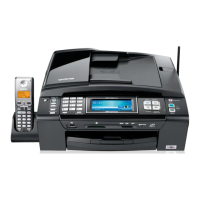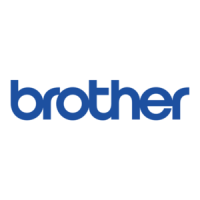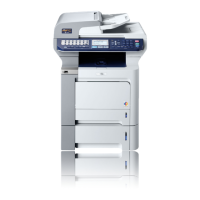Telephone services and external devices
41
Connections 6
The external TAD must be plugged into the
back of the machine, into the jack labeled
EXT. Your machine cannot work properly if
you plug the TAD into a wall jack (unless you
are using Distinctive Ring).
a Plug the telephone line cord from the
telephone wall jack into the back of the
machine, in the jack labeled LINE.
b Plug the telephone line cord from your
external TAD into the back of the
machine, in the jack labeled EXT. (Make
sure this cord is connected to the TAD at
the TAD’s telephone line jack, and not
its handset jack.)
c Set your external TAD to four rings or
less. (The machine’s Ring Delay setting
does not apply.)
d Record the outgoing message on your
external TAD.
e Set the TAD to answer calls.
f Set the Receive Mode to
External TAD. (See Choose the
correct Receive Mode on page 32.)
Recording an outgoing
message (OGM) 6
a Record 5 seconds of silence at the
beginning of your message. This allows
your machine time to listen for fax tones.
b Limit your speaking to 20 seconds.
c End your 20-second message by giving
your Fax Receive Code for people
sending manual faxes. For example:
“After the beep, leave a message or
press l51 and Start to send a fax.”
We recommend beginning your OGM with
an initial 5 second silence because the
machine cannot hear fax tones over a loud
voice. You may try leaving out this pause,
but if your machine has trouble receiving,
then you should re-record the OGM to
include it.
Multi-line connections (PBX) 6
We suggest you ask the company who
installed your PBX to connect your machine.
If you have a multi line system we suggest
you ask the installer to connect the unit to the
last line on the system. This prevents the
machine being activated each time the
system receives telephone calls. If all
incoming calls will be answered by a
switchboard operator we recommend that
you set the Receive Mode to Manual.
We cannot guarantee that your machine will
operate properly under all circumstances
when connected to a PBX. Any difficulties
with sending or receiving faxes should be
reported first to the company who handles
your PBX.

